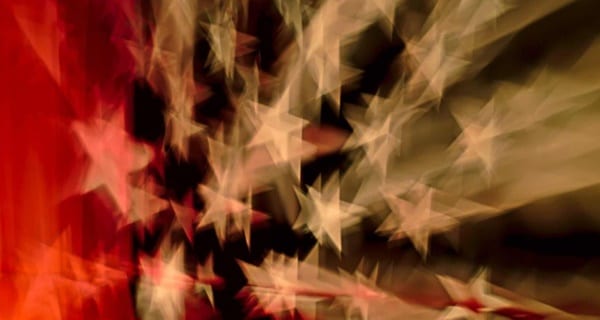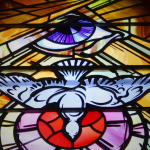
One common critique of the Star Wars saga is that it holds a simplistic view of good and evil. For example, Star Wars makes it easy to tell the difference between good and evil. The distinction is as plain black and white. The Jedi are good and the Sith are evil. The Rebellion is good and the Empire is evil. Even the costumes point toward a simplistic understanding of evil – the Stormtroopers are white, while the main villains, Darth Vader and now Kylo Ren, wear black. And, of course, their humanity is hidden by the fact that they wear masks.
Unfortunately, this simplistic notion of good and evil doesn’t just exists in the movies. It’s alive and well in our culture today. Once we eat of the fruit from the tree of knowledge of good and evil, we think that we are the force of good in the world, thus, they are the force of evil. We then tell mythical stories about the evil other. These myths lead to radical examples of claiming to be good while scapegoating others.
The latest example of this patently false myth are the “evil” Muslims who are out to conquer the United States. Donald Trump, leading Republican presidential candidate, recently held a rally in South Carolina. In good mythical fashion, he turned to the dark side by accusing Syrian refugees fleeing their war-torn country of “probably” being members of ISIS. You know, because they are Muslims. In response to Trumps remarks about Syrian refugees, a Muslim woman at the rally stood up in silent protest as she wore a shirt that said, “Salam, I come in peace.”
Despite her silence, the crowd turned against her, shouting at her to leave by chanting, “You have a bomb. You have a bomb.” For his part, Trump claimed, “There is hatred against us that is unbelievable. It’s their hatred; it’s not our hatred.”
Trump and many of his supporters live in a mythical world. A world where the distinction between good and evil is as clear as the distinction between night and day, between Christian and Muslim. They are a force for good; whereas silent Muslims wearing “Peace” shirts are full of hatred. Of course, I can easily split the world into good and evil. As I critique Trump and his supporters at the rally, I risk doing to them the same thing that they are doing to Muslims. I risk making a mythical claim to be a force of goodness over and against their force of evil.
Fortunately, Star Wars offers us an alternative to that myth. The critique that Star Wars has a simplistic view of good and evil is false. Stars Wars constructs the myth of good and evil only to deconstruct it.
The deconstruction of the mythical understanding of good and evil emerges in the Empire Strikes Back. Luke Skywalker goes to Dagobah to be trained by Yoda. As he runs and flips around the swamp-like forest with the little green alien on his back, Luke asks the mythical question, “How am I to know the good side from the bad?” Yoda replies, “You will know, when you are calm, at peace.”
But Luke discovers a greater truth about knowing the good side from the bad. The Force leads him into “The Cave of Evil.” As he enters the cave, he asks Yoda what’s inside. “Only what you take with you,” Yoda responds. Luke took with him his fear of the dark side; his fear of confronting Darth Vader.
A few moments after entering the cave, Luke has a vision of Darth Vader walking towards him with his lightsaber extended. Their sabers strike three times, then Luke slices off Vader’s helmet. It rolls to the ground, stops, and the mask exploded, only to show Luke’s face in the helmet staring straight at him.
In that scene, Luke discovered the truth about good and evil. In Darth Vader, the greatest symbol of evil in cinematic history, Luke sees himself. Even before he knows that Vader is his father, Luke learns that his identity is connected with Darth Vader. That’s because the evil that we see in the other is the evil that is inside ourselves. But we’d rather not see the evil within ourselves, so we suppress it by projecting it onto others. And so, at this moment in the Star Wars saga, Luke begins to discover that the distinction between good and evil is not primarily a distinction between himself and Darth Vader. Rather, the distinction between good and evil is a distinction that exists within himself.
Luke’s spiritual awakening is in the fact that he didn’t banish the darkness from within himself. He didn’t scapegoat the fear and evil within his own soul. When we do that, the fear and evil within only grows bigger and more menacing. Rather, Luke acknowledged the evil within himself. Later in the saga, after he slices off Darth Vader’s hand in Return of the Jedi, Luke stares at his own mechanical hand. Once again he becomes aware of the darkness within himself. He was able to resist the dark side not because he made a distinction between the good in himself and the evil in his enemies, but because he learned how to manage the darkness within his own soul.
Kylo Ren has a similar experience in the Force Awakens. He feels the tension between the light and the dark within himself, but manages it in a different way. Kylo holds his Grandfather’s helmet and offers a prayer, “Forgive me. I feel it again. The pull to the light. Show me again the power of the dark.” Luke and Kylo both feel the light and the dark within themselves. The difference is that Luke was able to incorporate the light and the dark. In doing so, Luke made peace with the darkness within. But Kylo felt tormented because he resisted the light that shined in the darkness of his soul.
The truth is that we are all a mixture of light and dark, good and evil. The great Russian novelist Aleksander Solzhenitsyn warned that, “The line dividing good and evil cuts through the heart of every human being. And who is willing to destroy a piece of his own heart?”
Jesus taught this lesson, too. He asked his followers, “Why do you see the speck in your neighbor’s eye, but do not notice the log in your own eye? Or how can you say to your neighbor, ‘Let me take the speck out of your eye,’ while the log is in your own eye? You hypocrite, first take the log out of your own eye, and then you will see clearly to take the speck out of your neighbor’s eye.”
Jesus and Star Wars both challenge us with the difficult spiritual practice of examining the darkness that lies within ourselves. Taking the log out of our own eye is painful work; I’d much rather point to the speck of evil that’s in my neighbor’s eye. But Christianity reminds us that we are much more like the disciples than we are like Jesus. We learn from Jesus, but we are much more like the disciples who abandoned, betrayed, and turned against Jesus during his darkest hour.
But the good news is that like Luke never gave up on his father, Jesus never gave up on his disciples. He resurrected to give his disciples a new mission. That mission wasn’t to locate evil out in the world and destroy it. Rather, Jesus’ mission is to “feed my sheep.” The great adventure that is Christianity is not to fight violence with more violence, but to care for those in need and to love even those we call our enemies.
More about that in the next part of this series.
Images: Luke Skywalker after defeating Darth Vader in Return of the Jedi (Screenshot from YouTube) and Kylo Ren praying to Darth Vader’s helmet (Screenshot from YouTube)
Other parts of this series:
Part 1: The Epiphany of a Great Adventure
Part 2: The Myth of Good and Evil















